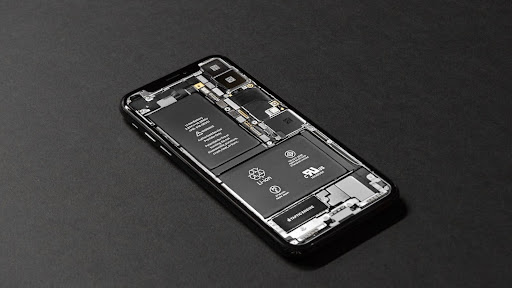 Imagine being able to carry your entire office in your pocket. That’s the reality we’re living in today, thanks to the rapid advancements in cell phone technology. From a mere communication device, it’s morphed into a multi-purpose tool, changing the way we work, play, and connect.
Imagine being able to carry your entire office in your pocket. That’s the reality we’re living in today, thanks to the rapid advancements in cell phone technology. From a mere communication device, it’s morphed into a multi-purpose tool, changing the way we work, play, and connect.
The evolution of cell phone technology is a fascinating journey, filled with innovations and breakthroughs. But what’s more intriguing is what the future holds. Whether you’re a tech enthusiast or just someone who can’t live without their smartphone, you’ll find this deep dive into the world of mobile technology both enlightening and exciting. Stay with us as we explore the past, present, and future of cell phone technology, and how it’s set to redefine our lives even further.
The Early Days of Mobile Devices
In the dawn of mobile technology, phones were bulky, cumbersome devices. When Martin Cooper from Motorola first introduced the DynaTAC 8000X in 1983, it, with its 2 pound weight, functioned merely as a wireless telephony device. Exceptionally expensive, with an initial price tag of about $4,000, owning this device wasn’t commonplace or practical. The purpose of these original mobiles was to make and receive calls, without the need for a landline, and they lacked the standard features most users take for granted today, such as texting, internet access, or even a digital contact list.
Which Factor Has Most Contributed to the Improvement of Cell Phone Technology?
The cell phone industry has witnessed monumental advancements in the past decades, pushing the boundaries of usability, connectivity, and innovation, forever altering the way we live our daily lives. Let’s explore some significant strides in cell phone technology that have turned our mobile devices into indispensable tools.
The Leap to Smartphones
Transitioning from basic mobile phones to smartphones marked a major leap in cell phone technology. While older mobiles focused primarily on call and text functionality, smartphones integrated computing capability, paving the way for mobile internet, apps, and advanced functionalities.
Apple’s iPhone, introduced in 2007, represents a trailblazer in smartphone technology, with its distinct touchscreen interface and vibrant app ecosystem. Similarly, Android, Google’s open-source operating system, launched in the same year, brought a wider range of devices to market, unlocking the gates for a multitude of manufacturers.
Smartphones transformed into mini-computers, hosting an array of functionalities, such as high-resolution cameras for capturing compelling visuals, GPS enabled maps for location tracking, and sensors for health monitoring, like heart rate and steps tracking.
Cellular Networks: 3G to 5G
Cellular technology also progressed exponentially, enhancing the speed, reach, and quality of connectivity. Initially, 3G networks were dominant, allowing internet and video calling on mobile devices. However, they presented limitations in terms of connection speed and data transmission.
Enter 4G, an upgrade that significantly upped the data transmission rates, allowing for high-definition video streaming and a smoother internet browsing experience on smartphones. As indicated in the previous summary, the advent of 5G, with its lightning-fast communication speed, is set to push these boundaries even further.
5G promises to handle more connected devices, reduce latency dramatically, and provide speeds that are exponentially greater than its predecessor, positioning it as a potential primary source of internet connection in future households.
The leap from 3G to 5G networks, therefore, represents a significant improvement in cellular technology and reinforces the evolving narrative of cell phone technology, enabling more advanced applications, such as Virtual Reality (VR) and Internet of Things (IoT) devices, that have been gradually assimilating into the modern-day lifestyle.
Increased Processing Speed
An element at the heart of improved cell phone technology is the processor, contributing massively to increasing processing speeds. Advancements in silicon tech and chip architectures, for instance, Snapdragon’s Octa-core processors and Apple’s A14 Bionic chip, represent notable leaps in processing speed.
With these advanced processors, smartphones experienced improvements in general speed and responsiveness. For example, Google’s Pixel 5, powered by Snapdragon’s 765G, operates apps faster and provides fluid navigation, enhancing the user’s phone experience. Thus, you can not only operate your phone quicker but also receive instant responses in most tasks, eliminating frustrations from lags or frozen screens.
Enhanced Multitasking Capabilities
The advent of advanced processors also plays a crucial role in increasing multitasking capabilities of modern smartphones. They efficiently manage multiple tasks concurrently, without causing any significant slow down in the device’s performance. For instance, Samsung’s Galaxy Note 20 Ultra, equipped with Exynos 990 or Snapdragon 865 Plus, flawlessly runs multiple applications simultaneously, thus accommodating your increasingly diverse digital needs.
In essence, advanced processor technology impacts the efficiency and capabilities of your smartphone, helping you keep pace with an ever-evolving, highly connected digital world. Boosts in processing speed and upgrades in multitasking capabilities, indeed, underscore the significant influence of advanced processor technology in the realm of improved cell phone technology.


